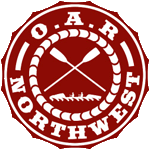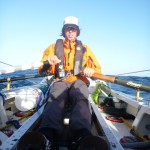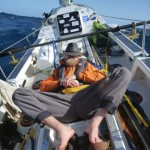[Good evening to all. Sorry for the delay… worked all day at the “real job” and just settling in.]
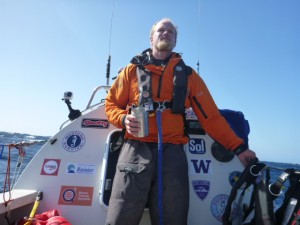
The sun rose on the James Robert Hanssen and the primary navigation monitor on the bulkhead was “flickering.” At about 8am boat time (1:30am Seattle time) my phone rang and on the other end was Jordan delivering the news. In the foggy haze of sleep I shot out a few emails to our marine technical team members to get the crew mobilized upon waking – Dr. Fritz Stahr (built the research station), Dr. David Burch (navigation genius), Matt Netting (electronics genius for sat phone and this particular piece of malfunctioning equipment).
The Furuno RD33 navigational data organizer… basically our navigation screen showing any one of the number of possible navigation tools that points us in the right direction while rowing… from compass to GPS, boat velocity to wind velocity… may or may not be malfunctioning at the moment.
[Click through for a couple more photos from life aboard the ocean rowboat.]
Throughout the day the marine technical team has been in contact with each other and the ocean rowboat to troubleshoot whatever problem may be going on at the moment. At best, it’s working just fine and is showing its distaste for the consistent beam seas and constant splashing. At worst, we have a host of other equipment onboard to get the job done the “old fashioned way”: map, compass, GPS. (note inclusion of GPS vs. sextant… have one onboard, but it’s also just as easy and cost effective to have 3-4 handheld GPS onboard. Click here for a short lesson on sextants for navigation)
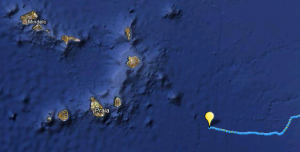
Meanwhile, the winds and current are really shining in our favor right now. If you’re following the live position update map, you’ll see they’ve made excellent progress over the last 36 hours, maintaining a steady course to run them past the Cape Verde Islands, just off the south side. Hopefully they’ll snap a photo on the way by to give you a little tour of that part of the world.
Stop in for a rest? No way.
Now if for any reason we believe that the scientific equipment is failing and needs to be fixed, we’ll pull in. A “continent to continent” record is nowhere near as valuable as hi-resolution marine and atmospheric data that will help environmental scientists, researchers, and educators world-wide to improve our understanding of mid-Atlantic marine ecosystems, ocean acidification, ocean currents, and countless other aspects of the data set that just aren’t available… until now.
At the moment it’s all working fine, with the exception of pCO2 – which decides to take a snooze now and again – and knot meter data which may or may not be recorded but just isn’t making it into the data stream sent back to our servers. (If you’re interested in any of the data, click here and keep coming back)
